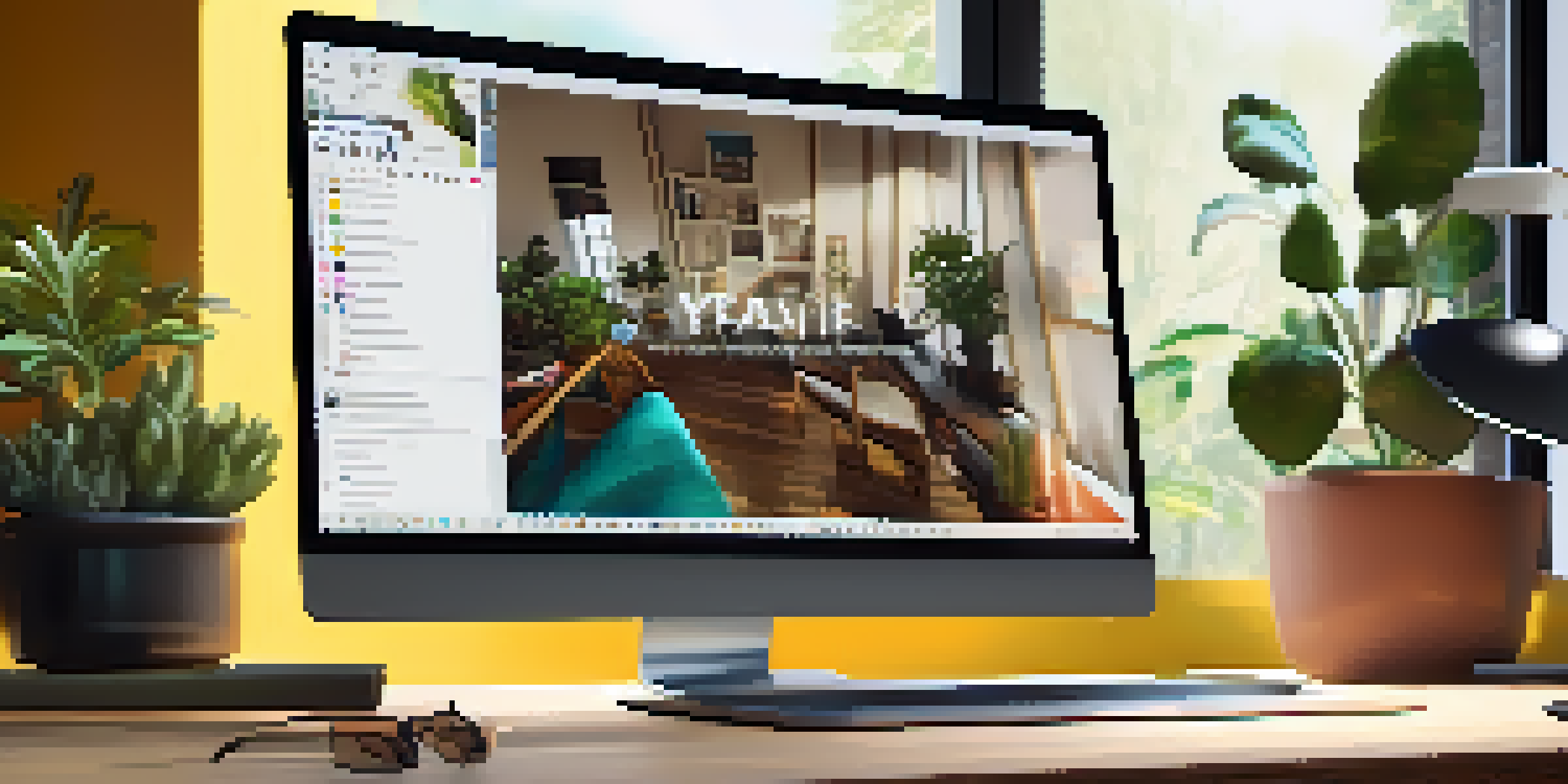How to Maintain a Digital Portfolio After Graduation

Understand the Importance of Your Digital Portfolio
A digital portfolio is more than just a collection of your work; it's a reflection of your professional identity. After graduation, it serves as a dynamic tool to showcase your skills and experiences to potential employers. Think of it as your online business card that can evolve with you throughout your career.
Your portfolio is a reflection of your professional identity, an evolving story that showcases your growth and capabilities.
In today’s digital age, employers often look for candidates with a strong online presence, and a well-maintained portfolio can set you apart. It’s an opportunity to give a potential employer a glimpse into your abilities, creativity, and growth. By maintaining your portfolio, you’re essentially keeping your professional story alive and engaging.
Moreover, a digital portfolio allows for ongoing self-reflection. As you update it with new projects and skills, you not only document your journey but also identify areas for growth and improvement. This continuous cycle of learning and showcasing will keep you relevant in a competitive job market.
Regularly Update Your Portfolio with New Projects
One of the easiest ways to ensure your portfolio remains fresh is by regularly adding new projects. Whether it's freelance work, internships, or personal projects, every piece of work contributes to your evolving narrative. Think of it like a garden; the more you nurture it with new plants, the more vibrant it becomes.

As you take on new challenges, make it a habit to document your progress and results. For instance, if you completed a project that involved innovative problem-solving, include it to demonstrate your capabilities. This not only showcases your skills but also highlights your ability to adapt and learn in different environments.
Keep Your Portfolio Updated
Regularly adding new projects keeps your digital portfolio fresh and reflective of your skills.
Don’t forget to reflect on older projects as well. Sometimes, revisiting past work can provide insights into how much you've grown. You might decide to refine descriptions or update images to better reflect your current style and abilities.
Optimize Your Portfolio for Search Engines
To ensure your digital portfolio gets seen, it’s crucial to optimize it for search engines. This involves using relevant keywords that potential employers might search for, such as your profession, skills, or specific project types. Think of SEO (Search Engine Optimization) as a way of guiding visitors to your portfolio like a lighthouse guiding ships safely to shore.
Continuous learning is the minimum requirement for success in any field.
Incorporate these keywords naturally within your project descriptions, headings, and even image alt texts. For example, if you’re a graphic designer, phrases like 'graphic design portfolio' or 'branding projects' can help improve visibility. However, remember to keep the language engaging and authentic—no one wants to read a keyword-stuffed piece.
Additionally, consider creating blog posts or articles related to your field, which can drive traffic to your portfolio. By sharing your insights and experiences, you not only enhance your credibility but also provide more content for search engines to index.
Showcase Your Personal Brand Consistently
Your digital portfolio should reflect your personal brand consistently. This means using a cohesive design, color scheme, and tone of voice that represents who you are as a professional. Just like a well-packaged product attracts buyers, a consistent portfolio can draw in potential employers.
Think about the elements that make up your brand—your values, your style, and your unique skills. Ensure these elements are evident in every project you showcase. For example, if you have a minimalist design philosophy, let that shine through in the layout of your portfolio.
Optimize for Search Engines
Using relevant keywords and engaging content can significantly improve your portfolio's visibility.
Consistency extends to your online presence as well. Make sure your social media profiles, LinkedIn, and other platforms align with your portfolio. This unified approach makes it easier for employers to recognize you and understand your professional ethos.
Seek Feedback and Iterate on Your Work
Feedback is a powerful tool for improvement, especially when it comes to your digital portfolio. Regularly seek input from peers, mentors, or industry professionals who can provide valuable perspectives on your work. Consider their feedback as a compass that can guide you toward enhancing your portfolio.
When you receive constructive criticism, take the time to reflect and make adjustments. Maybe a project description could be clearer, or a layout might need refinement. Just like a sculptor chiseling away at a block of marble, each piece of feedback can help you shape your portfolio into a masterpiece.
Additionally, don’t hesitate to ask for testimonials from colleagues or clients. Positive reviews can enhance your credibility and provide another layer of depth to your portfolio, demonstrating that others recognize your skills and contributions.
Utilize Analytics to Understand Portfolio Performance
Understanding how your portfolio performs is crucial for ongoing maintenance. Utilizing analytics tools can provide insights into visitor behavior, such as which projects attract the most attention. Think of these analytics as a map, helping you navigate your portfolio’s strengths and weaknesses.
By analyzing metrics like page views and average time spent on each project, you can identify what resonates with your audience. If certain projects are consistently popular, consider highlighting them more prominently. Conversely, if others aren't garnering much interest, you may want to reevaluate their presentation.
Promote Your Portfolio Actively
Actively networking and sharing your portfolio can enhance its exposure and open new opportunities.
This data-driven approach allows you to make informed decisions about your portfolio. Instead of guessing what works, you can rely on actual user interactions to guide your updates and improvements, ensuring your portfolio stays relevant and engaging.
Network and Promote Your Portfolio Actively
Simply having a digital portfolio isn’t enough; you need to actively promote it to gain visibility. Networking within your industry can open doors to new opportunities and connections. Think of networking as planting seeds—each conversation or connection can lead to new possibilities for growth.
Utilize social media platforms like LinkedIn to share your portfolio with your network. Engage with others by commenting on their posts, sharing insights, and showcasing your work. This interaction not only builds relationships but also increases your portfolio's exposure to a wider audience.

Consider joining professional groups or forums where you can share your portfolio and receive feedback. Participating in industry-related events, both online and in person, can also enhance your visibility. The more you promote your portfolio, the more likely it is to catch the eye of potential employers or collaborators.
Embrace Lifelong Learning to Enhance Your Portfolio
Finally, maintaining a digital portfolio is about embracing lifelong learning. The more you invest in your personal and professional development, the more valuable your portfolio becomes. Picture your portfolio as a living organism; it thrives on continuous learning and adaptation.
Stay updated with industry trends, tools, and best practices. Taking online courses, attending workshops, or even reading industry-related books can provide fresh insights and skills that you can showcase in your portfolio. Each new skill acquired can be a new feather in your cap.
As you learn and grow, make sure to reflect those changes in your portfolio. Highlight new skills, certifications, or experiences that you've gained. This not only keeps your portfolio current but also demonstrates your commitment to growth and excellence in your field.